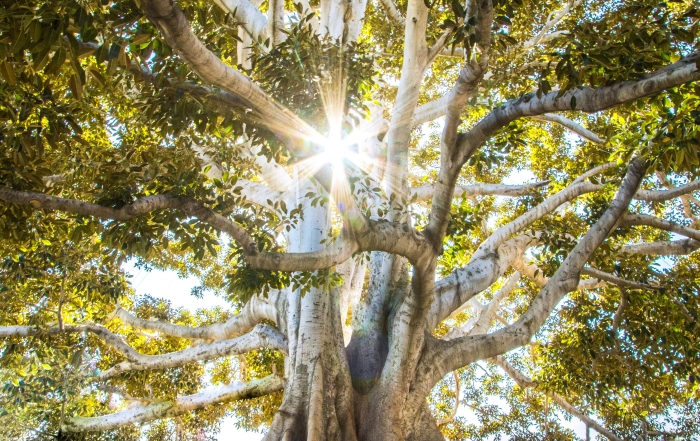The first two days of the special dawn services, we were blessed with the message “Adam, Where Are You?” It was the first call of redemption after the fall. It was a call of love and call for repentance. We are the Adams who need to hear that call from our Father. He is asking us to think about where we are, and whether we are where we should be (where He created us to be). So, today, let us think about where Adam was, what the Garden of Eden signifies, and where he ended up to be, so we can understand where we are and where we should be in our spiritual state and life. I have based this study/sermon on our founding pastor Rev. Abraham Park’s sermon(s), and the works of other biblical scholars, mainly Dr. John Walton, Gregory Beale, and Gordon Wenham.
The Bible was written for our redemption and salvation. But it was not written to us, in our context of language, culture, and understanding. It was written to Ancient Israel. It is God’s revelation of himself to Israel and secondarily through Israel to everyone else. As obvious as this is, we must be aware of the implications of that simple statement. Since it was written to Israel, it is in a language that most of us do not understand, and therefore it requires translation.
1. What Are The Cultural Ideas Behind Genesis 1?
We need to first understand that Genesis 1 is ancient cosmology. That is, it does not attempt to describe cosmology in modern terms or address modern questions. The Israelites received no revelation to update or modify their “scientific” understanding of the cosmos. They did not know that stars were suns; they did not know that the earth was spherical and moving through space; they did not know that the sun was much further away than the moon, or even further than the birds flying in the air.
They believed that the sky was material (not vaporous), solid enough to support the residence of deity as well as to hold back water. In these ways, and many others, they thought about the cosmos in much the same way that anyone in the ancient world thought, and not at all like anyone thinks today. And God did not think it was important to revise their thinking.
2. What Does It Mean For Something To Exist?
This may sound a bit philosophical, but we need to think about the meaning of existence in order to think about God’s creation and where Adam was.
In the ancient world, what was most crucial and significant to their understanding of existence was the way that different parts of the cosmos functioned, not their material status. How can we know this? The evidence comes both from the biblical text and from the literature of the ancient world. Nearly all the creation accounts of the ancient world start their story with no operational system in place. If we follow the sense of the literature and its ideas of creation, we find that people in the ancient Near East did not think of creation in terms of making material things, instead, everything is function and system-oriented. Creation thus constituted bringing order to the cosmos from an originally nonfunctional condition. Their focus was the places and roles of the gods and their relationship with those gods.
3. To Create
Hebrew verb bārāʾ: translated as “create” in Gen 1:1.
What exactly does it mean?
The purpose of the accounts in Genesis 1 and 2 are not mainly to tell us how God made and formed the material world. The purpose is redemptive-historical and soteriological. It tells us of the order, function, and the spiritual state that God considered was “good,” before they were lost because of the fall. It shows us the original image and state to which we and the world should be restored and redeemed.
4. Garden Of Eden (Where Adam Was)
The garden of Eden is not viewed by the author of Genesis simply as a piece of Mesopotamian farmland, but as an archetypal sanctuary, that is a place where God dwells and where man should worship him.
1. Just as the temple was the place of God’s unique presence experienced by the priests, so Eden was the place where God walked with Adam. The same Hebrew verbal form (Hithpael) used for God’s “walking back and forth” in the garden (Genesis 3:8) also describes God’s presence in the tabernacle (Leviticus 26:12; Deuteronomy 23:14; 2 Samuel 7:6-7; Ezekiel 28:14).
2. Adam is depicted as a priest with respect to his task, namely, “to work” (עָבְדָ֖) and “to keep” (שָׁמְרָֽ) the garden, which is the priest’s task in the temple (Numbers 3:7-8; 8:25-26; 18:5-6; 1 Chronicles 23:32; Ezekiel 44:14). Adam also donned priestly attire (Ezekiel 28:13).
3. The cherubim guard the tree of life (Gen 3:24), which became memorialized in the tabernacle (Exodus 25:18-22).
4. Israel’s tabernacle and temple had wood carvings and Palm tree designs that gave it a garden-like ambience (1 Kings 6:18, 29, 32, 35; 7:18-20).
5. Ezekiel refers to “Eden, the garden of God… the holy mountain of God” and also alludes to it containing “sanctuaries” (Ezekiel 28:13-18; 7:24; Leviticus 21:23; Jeremiah 51:51).
6. Just as the entrance to Israel’s later temple was to face east and be on a mountain, and just as the end-time temple of Ezekiel was to face east (Ezekiel 40:6) and be on a mountain (Ezekiel 40:2; 43:12), so the entrance to Eden faced east (Genesis 3:24) and was situated on a mountain (Ezekiel 28:14-16).
7. As a river flowed out from Eden (Gen. 2:10), so a river flows from the eschatological temple (Ezekiel 47:1-12; Revelation 21:1-2; Psalm 36:8-9; Revelation 22:1-2).
8. Just as the temple had a tripartite structure of concentric circles of holiness (Holy of Holies > Holy Place > Courtyard), so the garden of Eden had the same (Eden > Garden > Outer World).
9. Just as the climax and purpose of creation was rest (Gen 2:1-3), so the construction of the tabernacle culminates with rest (Exodus 31:12-17).
Šbt is the transition; nwḥ is the purpose. This concept can be understood both through an analysis of the theology of rest in the Bible and through an analysis of divine rest in the ancient world.
When God tells the Israelites that he is going to give them rest (nwḥ) from their enemies (Deuteronomy 12:10; Joshua 1:13; 21:44; 2 Samuel 7:1; 1 Kings 5:4), he is not talking about sleep, relaxation or leisure time. The rest that he offers his people refers to freedom from invasion and conflict so that they can live at peace and conduct their daily lives without interruption. It refers to achieving a state of order in society. Such rest is the goal of all the ordering activities that the Israelites are undertaking to secure their place in the land.
God’s rest is his place of residence, it is a place for relationship, but, beyond those, it is also a place of his rule. Note Psalm 132:7-8, where the temple is identified both as God’s dwelling place and as his resting place. Psalm 132:14 goes on to identify this resting place as the place where he sits “enthroned.” (Ezekiel 40–48)
Adam’s task: multiply and subdue – to enlarge and broaden the realm of this Sabbath (God’s reign).
5. Adam’s Place After The Fall (Where Was Adam After Rejecting God’s Word?)
Address of mankind: Romans 1:20-27
Result (fruition and visible manifestation of sin):
(1) Disobedience
(2) Idolatry
(3) Adultery
2 Corinthians 12:20–21
20 For I am afraid that when I come I may not find you as I want you to be, and you may not find me as you want me to be. I fear that there may be discord, jealousy, fits of rage, selfish ambition, slander, gossip, arrogance and disorder. 21 I am afraid that when I come again my God will humble me before you, and I will be grieved over many who have sinned earlier and have not repented of the impurity, sexual sin and debauchery in which they have indulged.
Conclusion: Where am I? (Where are you?)
AMEN.





